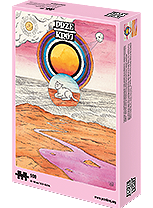
What is life? Carl Zimmer, a writer popularizing the natural sciences, challenges our stereotypical thinking about what is alive and what is dead.
I think each of us has heard the words Well, that’s life. But what exactly is life? We have been asking ourselves this question since the dawn of time; the most eminent philosophers, biologists, biochemists, astrobiologists and physicists have all pondered it… There were so many definitions that scientists had to start classifying them. Now Carl Zimmer – a journalist dealing with the natural sciences, author of 14 award-winning books, including She Has Her Mother’s Laugh and Parasite Rex – has plunged himself into the mix. To find out what life is, Zimmer grew bacteria in a laboratory and researched their evolution; he walked in abandoned mines and studied wintering bats; he also came face to face with a python. Apart from this, he followed the work of eminent scientists. The result of these adventures is his latest book Life’s Edge: The Search for What it Means to be Alive.
Jan Dzierzgowski: Scientists are great at creating definitions, so they probably established what life is a long time ago, right?
Carl Zimmer: You would think so, but science has come up with many definitions of life – and as far as I can tell, there’s no consensus. Every biologist I talk to has their own favourite definition. You ask one of them, they will explain to you what their definition of life is. You turn to another one and hear that the first definition is ridiculous. So it’s a fascinating state of chaos. Imagine that physicists did not agree on the definition of an electron. That would be strange, but that’s where we are with biology.
How come? After all, we were all taught in school that every living organism has strictly-defined characteristics. It must, for example, assimilate food and perform metabolism, reproduce, react to stimuli…
When scientists talk about what life is, there are certain hallmarks that come up again and again. These include metabolism, evolution and homeostasis. However, if you make such a list and start looking at individual organisms or cells, you quickly run into trouble when you find entities that have only some





